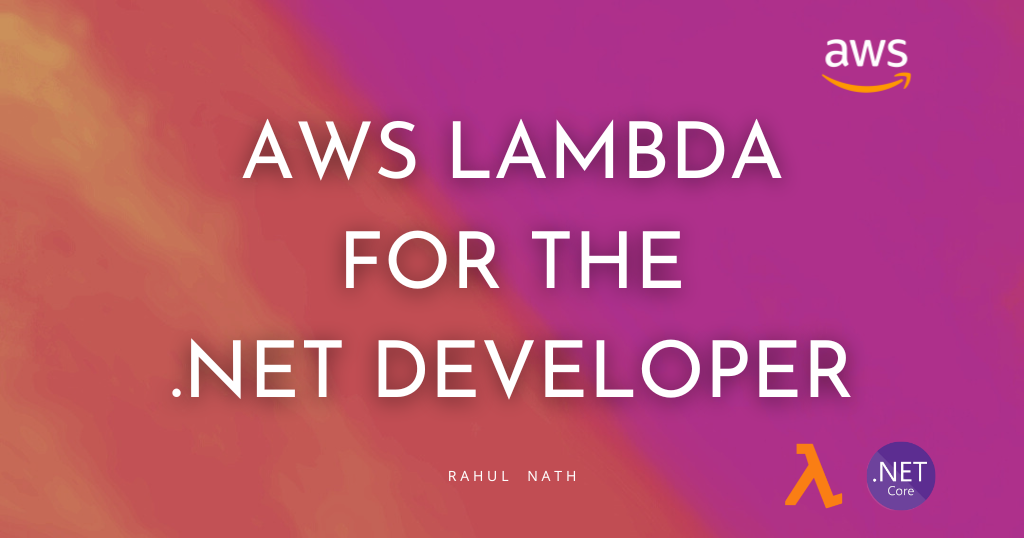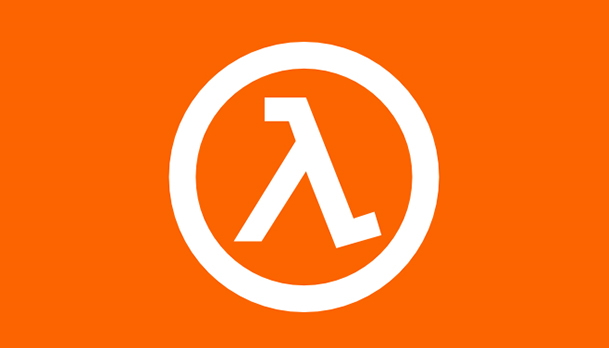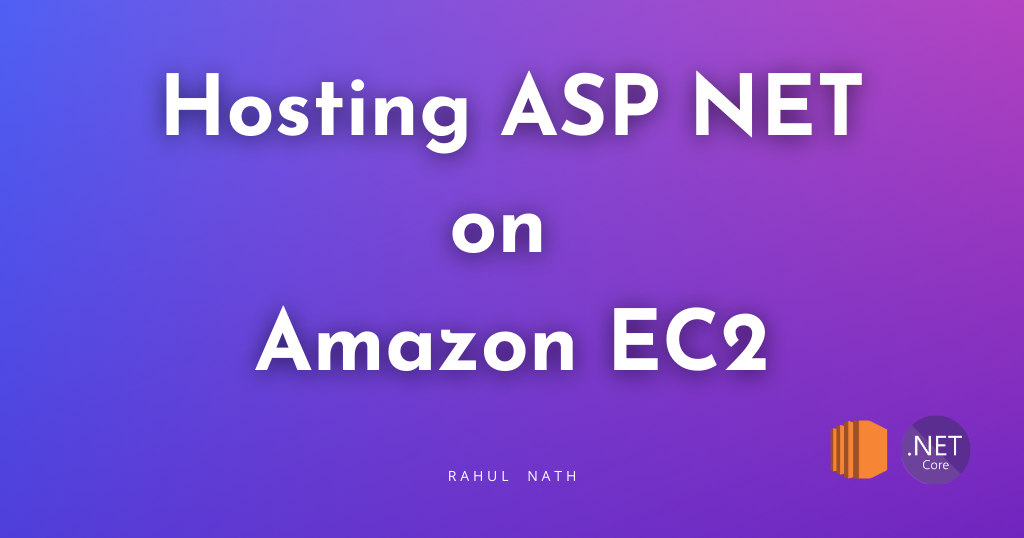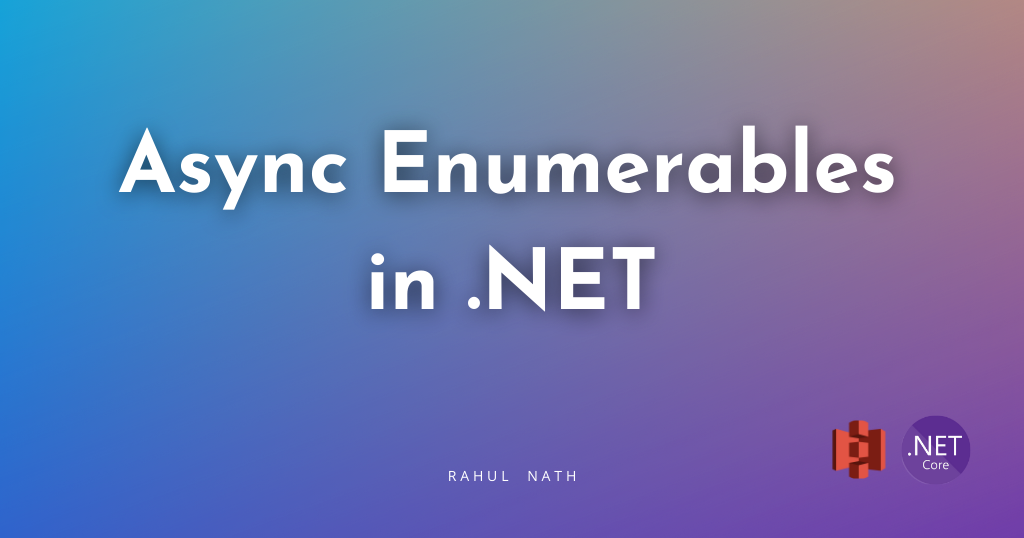
AWS Lambda For The .NET Developer
This blog post is a collection of other posts that covers various aspects of AWS Lambda and other services you can integrate with when building serverless applications on Lambda.
Table of Contents
This article is sponsored by AWS and is part of my AWS Series.
AWS Lambda is a serverless compute service provided by AWS that allows you to run code without the need to manage servers.
Upload your code to Lambda, and it handles the rest, including scaling and availability.
This blog post is a collection of other posts that covers various aspects of AWS Lambda and other services you can integrate with when building serverless applications on Lambda.
Getting Started With AWS Lambda
If you are completely new to AWS Lambda and just getting started, check out my getting started article below.

It covers setting up the tools and development environment to build AWS Lambda Functions and write and test our first Lambda Function on a local machine and deploying to AWS.
If you want a more structured course, you can also get my Udemy Course on AWS Lambda For The .NET Developer
Also, check out the below articles to have an understanding of the Lambda Lifecycle and if you want to run docker images on AWS Lambda.
- Why You Should Care About Lambda Lifecycle As A .NET Developer?
- How To PGP Encrypt An S3 File Using AWS Lambda Running Docker Images
AWS Lambda Triggers
AWS Lambda Triggers allow you to execute your Lambda function in response to a specific event or trigger. This event-driven architecture allows you to integrate your Lambda functions with other AWS services and execute your code in a serverless environment.
With a variety of triggers available, you can easily build powerful serverless applications that can scale on demand and automatically respond to different types of events.
DynamoDB Triggers
DynamoDB Triggers allow you to automatically invoke a Lambda function in response to specific actions on a DynamoDB table, such as item updates, inserts, or deletions.
DynamoDB Triggers enable you to build powerful and scalable applications that can automatically respond to changes in your DynamoDB tables without the need for any polling or manual intervention.
Check out the below articles to understand more about DynamoDB and AWS Lambda Triggers.
- AWS DynamoDB For The .NET Developer: How To Easily Get Started
- DynamoDB Streams and AWS Lambda Trigger in .NET
- How to Handle Exceptions When Processing DynamoDB Stream Events in .NET Lambda Function
S3 Triggers
Amazon S3 Triggers allow you to automatically invoke a Lambda function in response to specific events on an S3 bucket, such as object creation, deletion, or modification.
With S3 Triggers, you can easily integrate your Lambda functions with your S3 buckets and automate your workflows, making your applications more efficient and reducing the need for manual intervention.
Check out the below articles to understand more about Amazon S3 and AWS Lambda Triggers.
- Amazon S3 For the .NET Developer: How to Easily Get Started
- Amazon S3 and AWS Lambda Triggers in .NET
SQS Triggers
Amazon Simple Queue Service (SQS) is a fully managed message queuing service that enables you to decouple and scale microservices, distributed systems, and serverless applications.
SQS Triggers allow you to automatically invoke a Lambda function in response to messages in an Amazon Simple Queue Service (SQS) queue.
With SQS Triggers, you can easily integrate your Lambda functions with your SQS queues and build resilient, loosely coupled, fault-tolerant systems.
Check out the below articles to understand more about Amazon SQS and AWS Lambda Triggers.
- Amazon SQS For the .NET Developer: How to Easily Get Started
- Amazon SQS and AWS Lambda Triggers in .NET
- How to Handle Exceptions When Processing SQS Messages in .NET Lambda Function
SNS Triggers
Amazon Simple Notification Service (SNS) is a fully managed pub/sub messaging service that enables you to send and receive messages from distributed systems, microservices, and serverless applications.
SNS Triggers allow you to automatically invoke a Lambda function in response to messages published to an Amazon Simple Notification Service (SNS) topic.
With SNS Triggers, you can easily integrate your Lambda functions with your SNS topics and build highly responsive and event-driven systems.
Check out the below articles to understand more about Amazon SQS and AWS Lambda Triggers.
- Amazon SNS For the .NET Developer: Getting Started Quick and Easy
- Amazon SNS and AWS Lambda Triggers in .NET
- SNS→Lambda Or SNS→SQS→Lambda
Building APIs with AWS Lambda
There are several ways to build APIs on AWS Lambda, including using API Gateway, Function URLs, and hosting ASP.NET Core Applications.
Amazon API Gateway
API Gateway provides a fully managed solution for creating and managing RESTful APIs that can be integrated with Lambda functions. It offers a wide range of API management tools and features such as caching, rate limiting, and authentication.
- Amazon API Gateway - Introduction To Building REST APIs
- How To Build an API Gateway REST API Using AWS Lambda Proxy Integration?
- Using .NET AWS Lambda Authorizer To Secure API Gateway REST API
Function URLs
Function URLs allow you to quickly and easily invoke your Lambda functions over HTTP without the need for any additional infrastructure. This approach is ideal for simple APIs that do not require advanced API management features.
- Function URLs - Quick and Easy way to Invoke AWS Lambda Functions over HTTP
- How To Secure and Authenticate AWS Lambda Function URLs
Hosting ASP.NET Core
Hosting ASP.NET Core applications on Lambda functions enables you to build and deploy full-featured web APIs using familiar development tools and frameworks.
I hope this helps you get a good understanding of AWS Lambda and how to integrate it with other AWS Services from your .NET application.
Rahul Nath Newsletter
Join the newsletter to receive the latest updates in your inbox.


